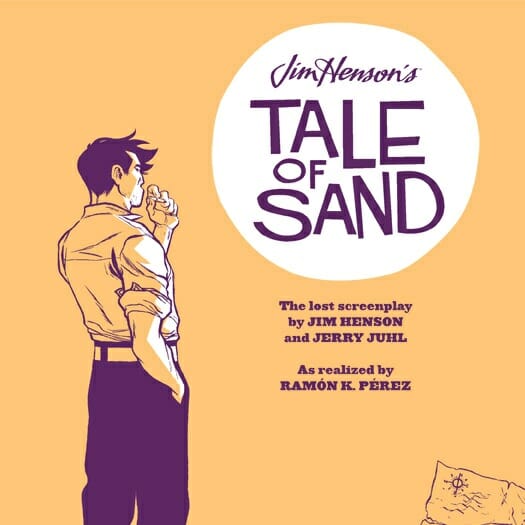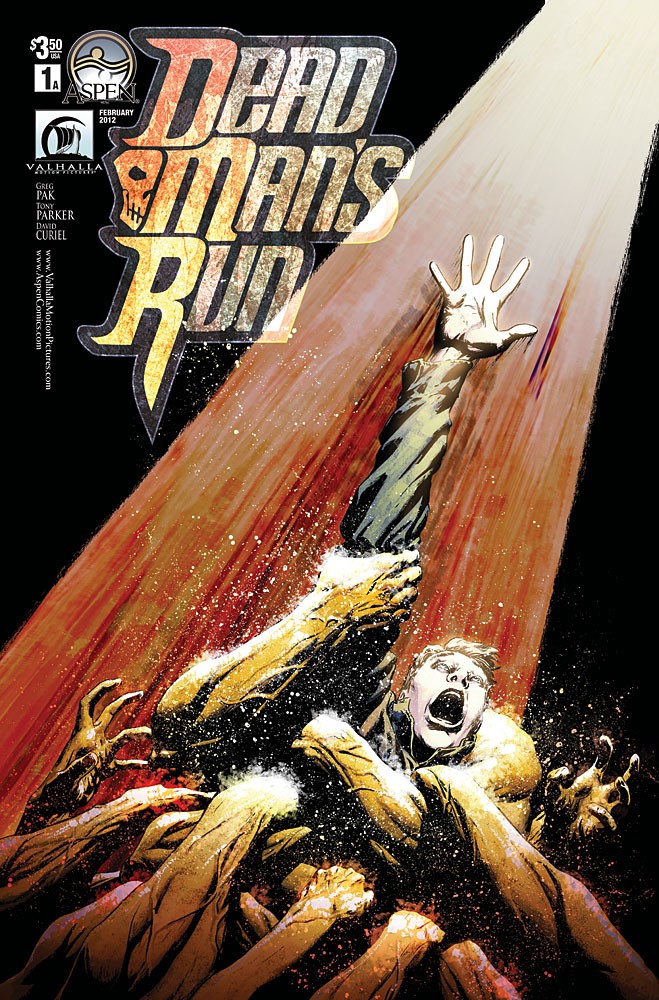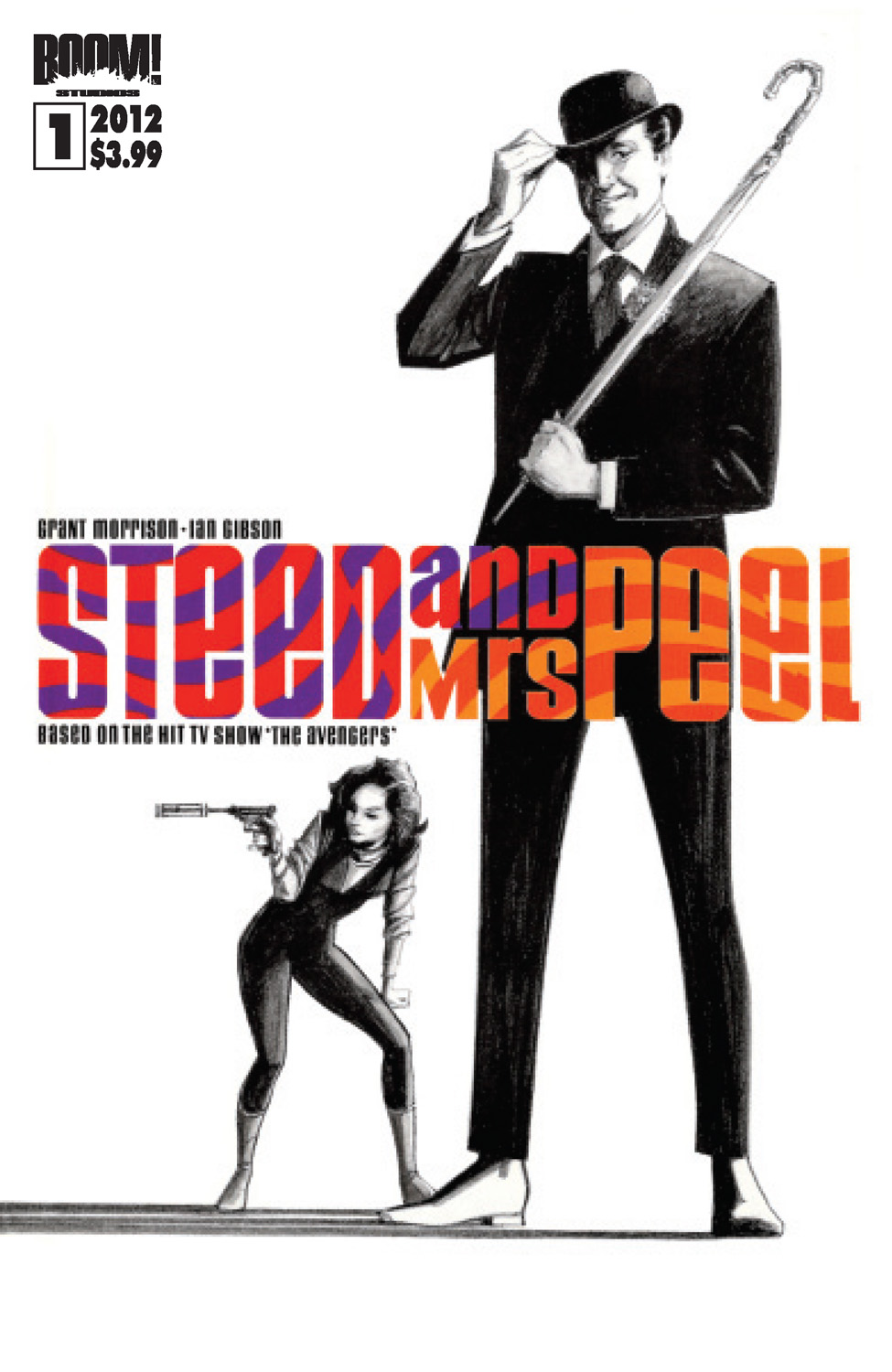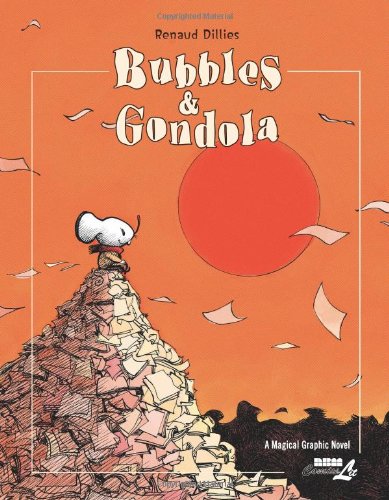
Each week, Paste reviews the most intriguing comic books, graphic novels, graphic memoirs and other illustrated books.

Dead Man’s Run #1
by Greg Pak and Tony Parker
Aspen/Valhalla, 2012
Rating: 8.3
Dead Man’s Run is the type of pitch you’d find in the mature reader’s library of the 80s: a crafty prison worker finds himself trapped in a hellish underground bunker where souls are traded for currency and escape is nigh impossible. Surreal concepts, macabre villains and a healthy dose of metaphysics might make you think you’re reading a lost Hellblazer tale. And that’s definitely a compliment. Writer Greg Pak (Incredible Hulk, Red Skull) leaves a thrift store of plot threads to seed interest for future issues, making this debut feel much like a pilot for a theatrical maxiseries. (Appropriately, this title falls under Walking Dead producer Gale Anne Hurd’s Valhalla imprint). Instead of relying on Biblical iconography, the devil is reimagined as a sleek businesswoman who may be as much a prisoner as any of her wards. Likewise, protagonist Sam and his adorable sister Juniper’s entrapment is as much a mystery as the nature of the underground abyss. Are they dead? Dreaming? Stuck on the G Train? These are questions only a Rod Sterling voiceover could answer. Tony Parker’s pencils show promise with some solid layouts, but his figures are often overwhelmed by heavy inks and jagged anatomy. This quibble aside, I can’t wait to see the depths to which this promising series descends. (SE)

Jim Henson’s Tale of Sand
by Jim Henson, Jerry Juhl and Ramon Perez
Archaia Entertainment, 2012
Rating: 6.7
Based on a full-length screenplay by Henson and writing partner Jerry Juhl, this new comic from Archaia certainly won’t tarnish the almighty Muppeteer’s legacy. It’s more Alejandro Jodorowsky than Kermit, more The Prisoner than Sesame Street, with a circular narrative that reflects the concerns and aesthetic preferences of the era when it was written (late 1960s/early 1970s). That doesn’t mean kids won’t appreciate it, but the audience is really adolescent to adult, due to its somewhat druggy-feeling paranoia. Perez’s illustrations get a lot in, with some panels layered on top of one another, and they can feel like the meeting of Jack Davis and Jaime Hernandez, but there are also times when the book is confusing. Some of this obscurity is deliberate, but that doesn’t make it less annoying. Let’s put it this way: if you didn’t give up on Lost, you probably won’t have the same complaints I do about Tale of Sand. It’s not a major Henson work, but it’s better than some, and it’s reliably interesting, if brief. (HB)

Steed and Mrs. Peel #1
by Grant Morrison and Ian Gibson
Boom! Comics, 2011
Rating: 7.0
Don’t get too excited; this isn’t a new Morrison series. It’s a reprint of a twenty-year-old comic based on The Avengers, the British TV show from the 1960s. I haven’t seen much of The Avengers (I’m more of a Prisoner man), and Morrison doesn’t waste time with introductions, but I get the basics — trad bowler hats and mod catsuits team up to spy for the Queen in swinging London, or something. The comic is as tirelessly British as I expected, all agony aunts and Royal Navy dice games, but not prohibitively so. Any Yank with eyes and a brain behind them should be able to understand the plot, which involves the titular agents investigating the murder of an eccentric admiral and slowly uncovering some kind of conspiracy. It ends abruptly with Peel mulling a new clue from a character’s dying breath. It’s a bit of a jarring conclusion, but definitely has me interested in what comes next. Gibson’s art has a cartoonish flair that veers into the grotesque, and his layouts are occasionally awkward, but it largely fits the spirit of the setting, and it’s nice to see a comic whose art doesn’t look like the output of a computer program. Steed and Mrs. Peel might be a minor footnote on Morrison’s CV, but that doesn’t mean it should be ignored. (GM)

Bubbles and Gondola
by Renaud Dillies, trans. Joe Johnson
NBM, 2011
Rating: 7.2
What appears to be a cute children’s book about a cartoony mouse and his pal, a bluebird, turns out instead to be a serious, if slim, meditation on the difficulties of creative pursuits. I assumed the two nouns in the title were characters’ names, only to be surprised by their appearance in the story as metaphors for how we relate to ideas. Bubbles and Gondola is full of small surprises like that. Its tone is pleasurably mopey, in the way Europeans do much better than Americans, as Charlie (our hero, the mouse) learns about loneliness and writing. Here’s the thing: he only gets maybe a B-minus, which is another smart decision by Dillies. Sure (spoiler alert), there’s a happy ending, but the book is focused much more on process and immediacy than on conclusions and lessons. Hence its use of Carnival and the joy of occasionally losing yourself, whether in music, alcohol or art. Winsor McCay is a clear influence, both in the gentle, swoopy nature of the surrealism on display and in the fine lines of Dillies’ artwork, which also draws on George Herriman’s distinctive shading. (HB)